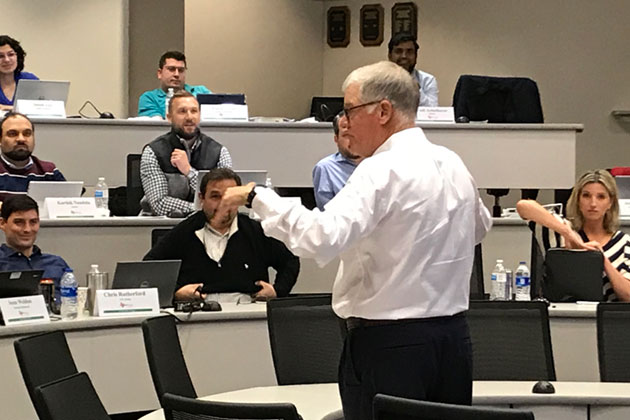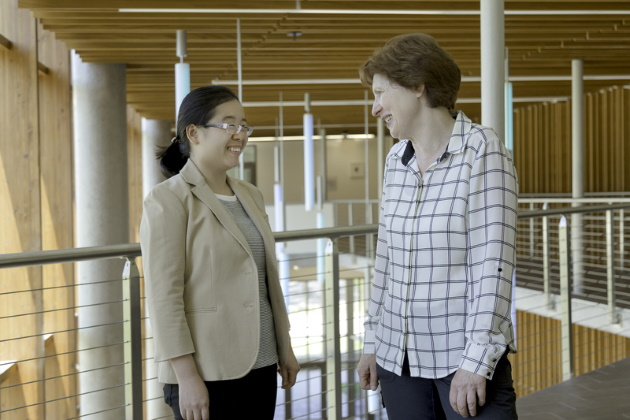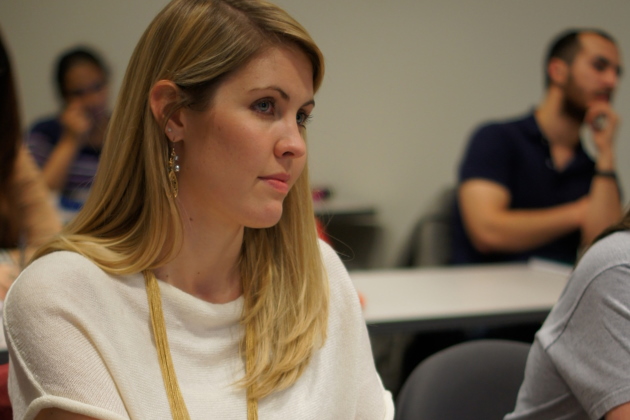
Written by Pamela Foster Brady
Creating and maintaining a relevant curriculum is key for students to achieve the maximum return on investment (ROI) in an executive MBA program.
Curriculum is Key for Students
Creating and maintaining a relevant curriculum is key for students to achieve the maximum return on investment (ROI) in an executive MBA program. Two areas that the UT Dallas Jindal School of Management EMBA program is addressing includes emerging technologies and creating shared value. Emerging technologies are becoming an integral part of our business environment. While your organization may not be on the cutting edge of the latest technology, consulting publications, academic publications and the news are touting how emerging technologies are disrupting businesses. Every organization should be preparing to “disrupt or be disupted”.
Recently the WSJ noted that enrollment in the US MBA has declined. As administrators, it is paramount that we ensure the MBA curriculum remains relevant. There’s an increasing discussion in academia on the integration of business analytics. The debate is, should business analytics be integrated into the MBA or should it remain as an independent MS, Business Analytics? At UT Dallas, we are doing both. In addition to offering an MS, Business Analytics, in which we have over 900 students enrolled, the executive MBA program is integrating business analytics and emerging technologies into our curriculum.
Staying on top of the trends and technology
Our executive MBA students begin orientation with two lessons in Tableau, a data visualization tool and ESRI ArcView, a geo-database. Our information technology course begins with business analytics and then focuses on five emerging technologies including the Internet of Things (IoT), artificial intelligence, cybersecurity, blockchain and machine learning. Each semester, at least one course is integrating an emerging technology into the student learning so that our student experience is relevant in today’s dynamic business environment. The framework for our curriculum continues to be “strategy for performance transformation”. Our goal is to prepare students to design, develop, and implement strategy to grow their organization – emerging technologies will be an essential element to remain relevant. Students also have the option to take additional classes in Tableau and sit for their Level I Tableau exam in their third semester. Are you a good EMBA candidate?
Creating shared value
Another emerging topic of interest is creating shared value. As a member of the EMBA Council, an international organization of 300+ international executive MBA programs, I participate in the annual and regional meetings to learn what other executive MBA programs are doing to ensure their respective program curriculum remains relevant. In October 2019, the keynote speaker at the annual conference was Mark Kramer, PhD. He introduced the concept of Creating Shared Value: Competitive Advantage through Social Impact1. At the conclusion of his presentation, he challenged the program and academic directors in the audience to bring this curriculum to our respective Executive MBA classrooms. I have introduced the concept to the Executive MBA program faculty at UT Dallas. We have established a CSV faculty committee as we begin weaving CSV throughout the curriculum.


